Varigence Blog
Introduction to Databricks Solutions with BimlFlex Data Automation
In the ever-evolving landscape of data integration and analytics, the fusion of Databricks and BimlFlex offers a game-changing approach. Here's a comprehensive look into their integration and how this combo can enhance your Azure Data Factory operations.
Setting the Stage with Databricks
To tap into the power of Databricks:
-
Establish Your Connections: Start with connecting your data sources. Be it SQL Server data, flat files, JSON, REST API, or even FTP/SFTP systems - everything can be integrated. Notably, parquet files also play a pivotal role.
-
Create a Landing Connection: This is your gateway to ensure that the data you import is first stored in a data lake and subsequently in a persistent data lake. It ensures that original files are preserved.
-
Transition to Staging Environment: This is achieved via an ODBC connection. It acts as an integration placeholder and facilitates metadata import from Databricks.
-
Compute Connection: This is a flexible feature, allowing for multiple compute clusters if required. In our demonstration, it's configured for Azure Data Factory.
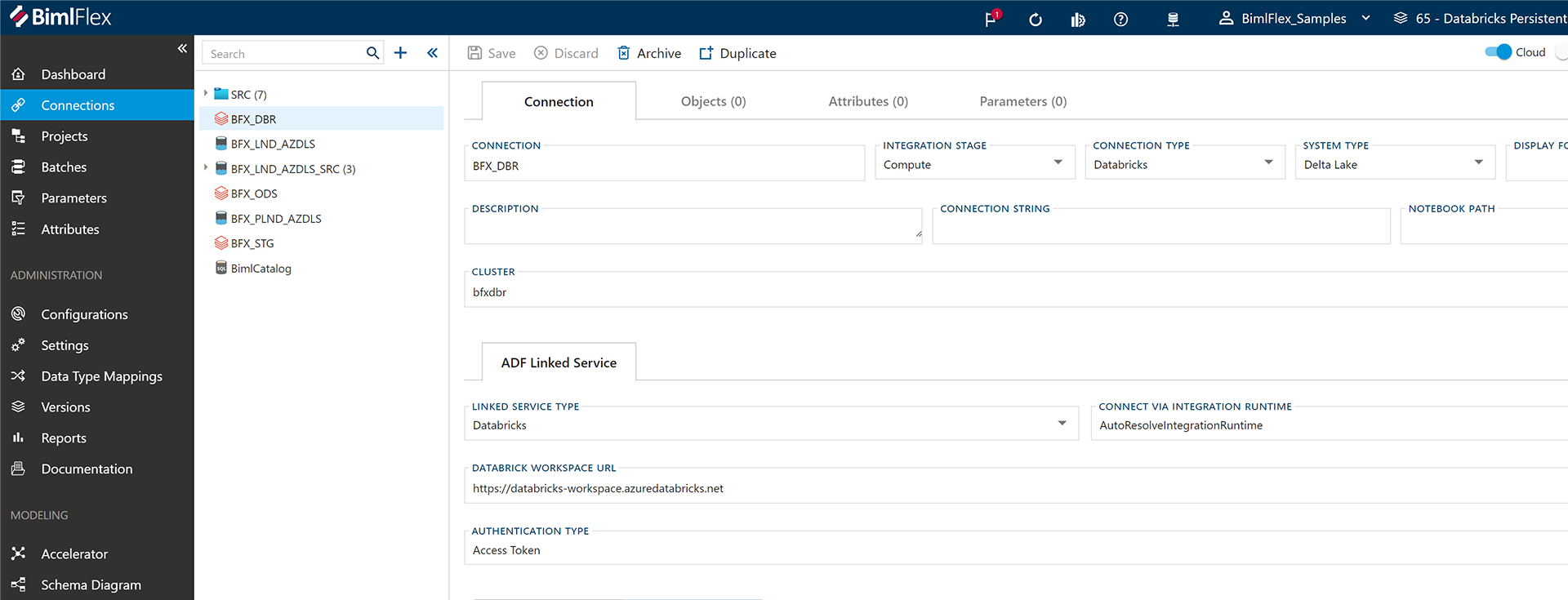
Configuring Data Load and Management
The project site is where you can dictate the data loading process:
- Extraction: Data is pulled from the source connection.
- Landing & Persistence: Data is saved as parquet files in a data lake and retained for future use.
- Staging: The retained data is staged using a Databricks compute cluster.
Furthermore, within Databricks settings, users have a plethora of configurations available, including Unity Catalog, Manage Tables, Global Parameters, and Temporary Views. These offer customizability, especially concerning time zones and other specificities.
Integrating with Azure Data Factory
Once your Databricks project is set up, it will automatically generate all the necessary Databricks notebooks and Azure Data Factory pipelines. Here are the steps:
-
Optimized Azure Data Factory Pipelines: With a two-step process of a high watermark lookup followed by a copy process, data extraction becomes efficient, eliminating redundant operations.
-
Data Vault Management: This feature manages the staging process for both source and persistent staging. If activated, it also initiates the Data Vault notebook.
-
Archiving Data: Users have the flexibility to archive extracted files. Once archived, the initial files in the staging area are removed for optimized storage management.
All these settings are easily toggled, making global parameters a significant asset in the process.
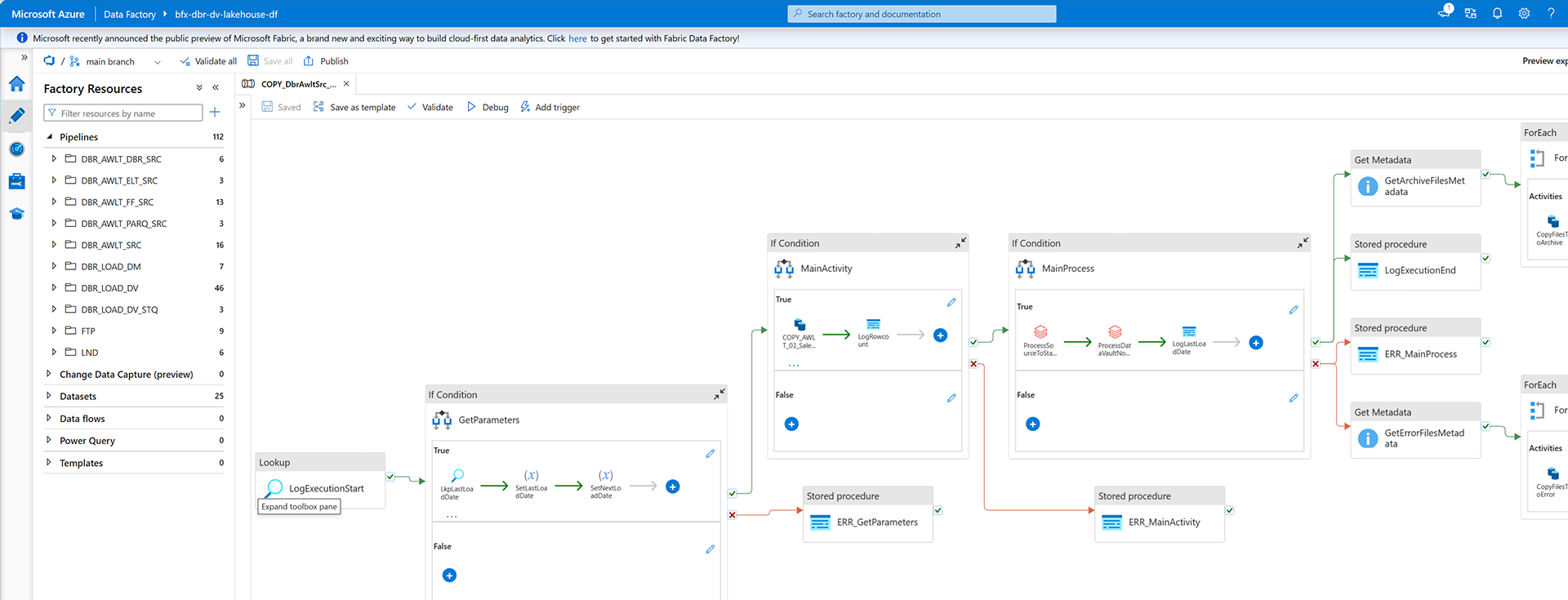
Delving Deeper into Azure Data Factory Pipelines
The integration shines when we look at how Azure Data Factory pipelines operate in tandem with Databricks. All pipeline artifacts are saved in a repository, like a GitHub repository, allowing streamlined development operations.
When you navigate to the Azure Data Factory instance and access the Repositories section, it's easy to find all associated files and artifacts. Notably, the table scripts, housed in a dedicated folder, are the backbone of the operation. These scripts, mostly in Python, deploy the pipelines with each having its unique operational instructions.
Moreover, the integration provides a customized data loading mechanism. With the persistent staging feature, the scripts decide if a full or delta process is needed.
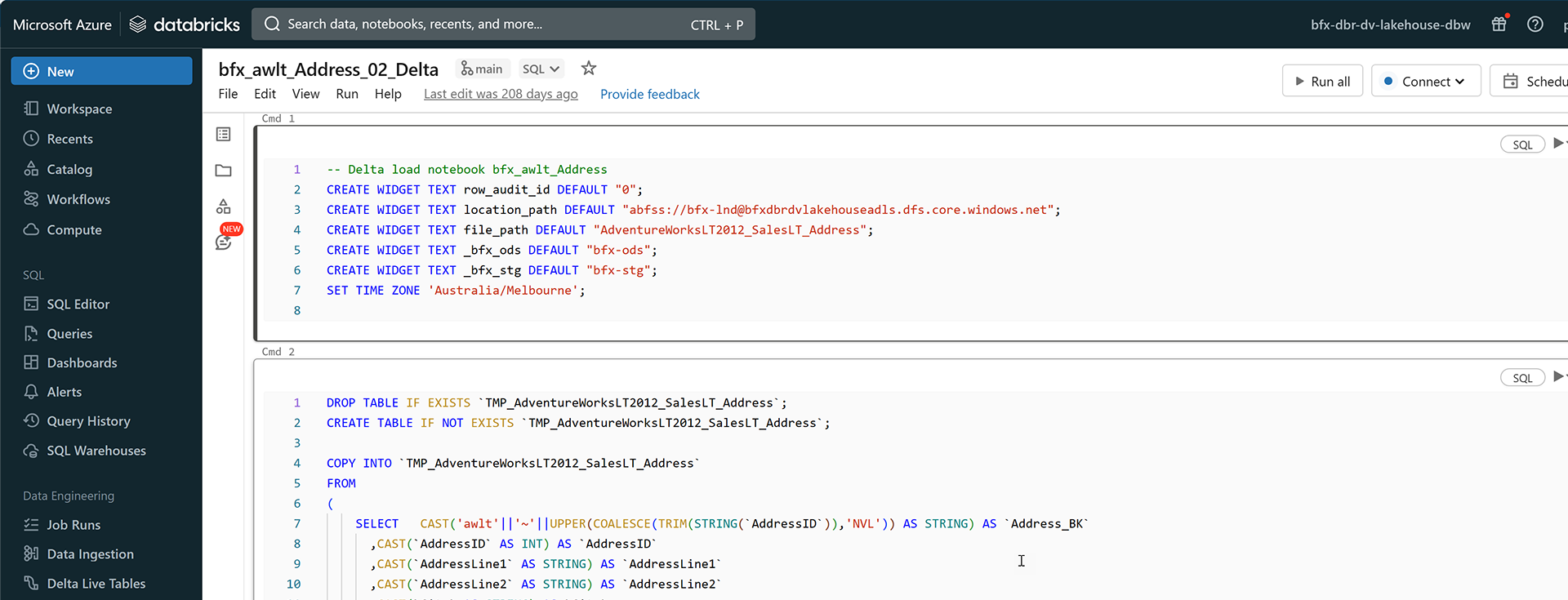
Conclusion
The synergy of Databricks and BimlFlex provides an enhanced approach to Azure Data Factory automation. From efficient data extraction to seamless staging and integration, users can optimize operations, reduce costs, and streamline the data transformation process. This integration truly represents the future of data analytics and cloud-based solutions.
BimlFlex: The Power of Modular Data Integration and Automation
BimlFlex is revolutionizing the way we think about data solutions. By providing a robust, modular platform, BimlFlex ensures that businesses can efficiently tailor-make their data solutions according to their distinct needs. Here are some key takeaways from a recent presentation on the remarkable capabilities of BimlFlex:
What is BimlFlex?
BimlFlex operates on a modular structure focused on a source, process, and target approach. This structure enables seamless data integration irrespective of the source system, ensuring that data can be efficiently ingested into various destinations, databases, data lakes, or other platforms.
Versatility is its Strength
BimlFlex is compatible with multiple cloud-based and on-premise systems, from Azure Data Factory and Azure Mapping Data Flows to Integration Services (SSIS). It also integrates with Databricks and supports storage options like SQL databases, Azure Synapse, Snowflake, and Delta Lake.
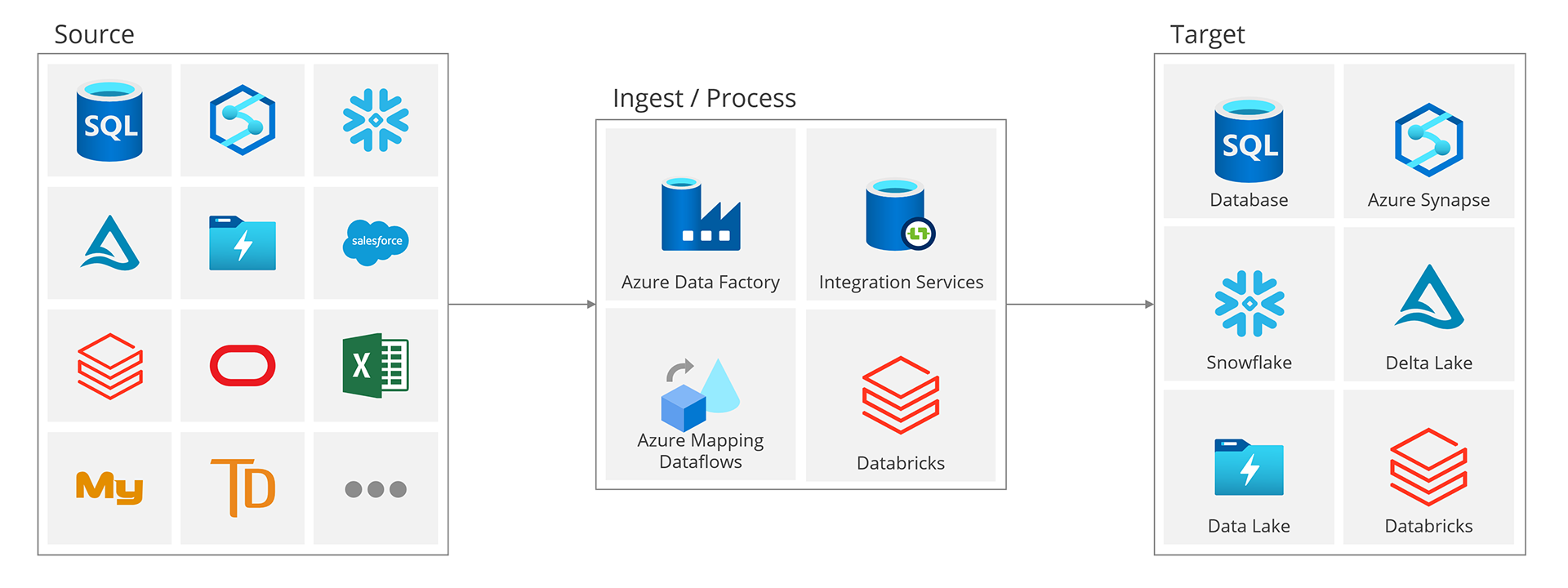
An Analogy with Lego
Just as Lego consists of various unique blocks that can be combined in endless configurations, BimlFlex offers distinct components that users can assemble to create custom solutions. Whether you need a simple data solution or a complex integration involving several layers, BimlFlex provides the tools to make it happen.
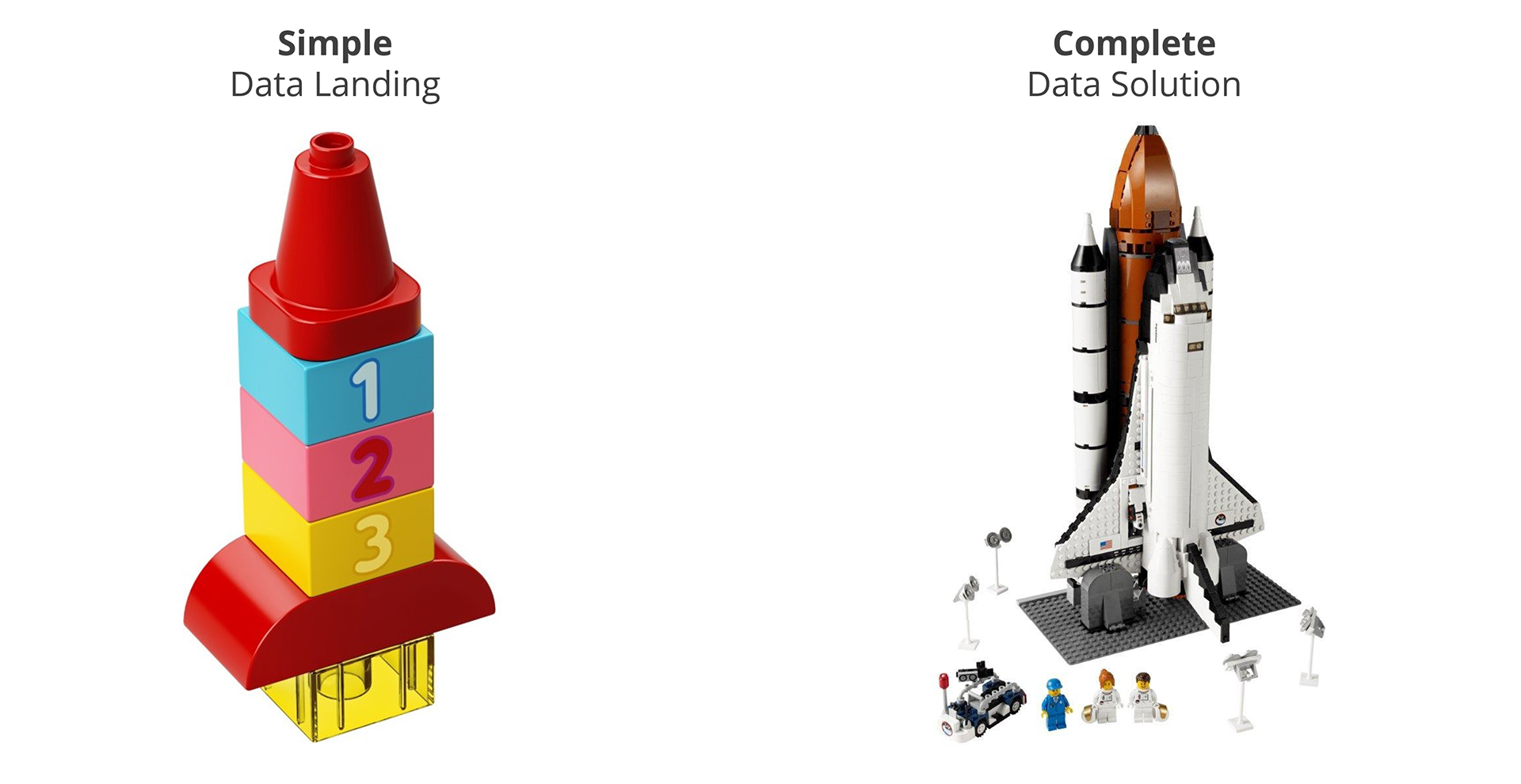
Design-Time Application
BimlFlex is predominantly a design-time application. Users can build their infrastructure using BimlFlex, and once they achieve the desired setup, they can run their code indefinitely without licensing requirements.
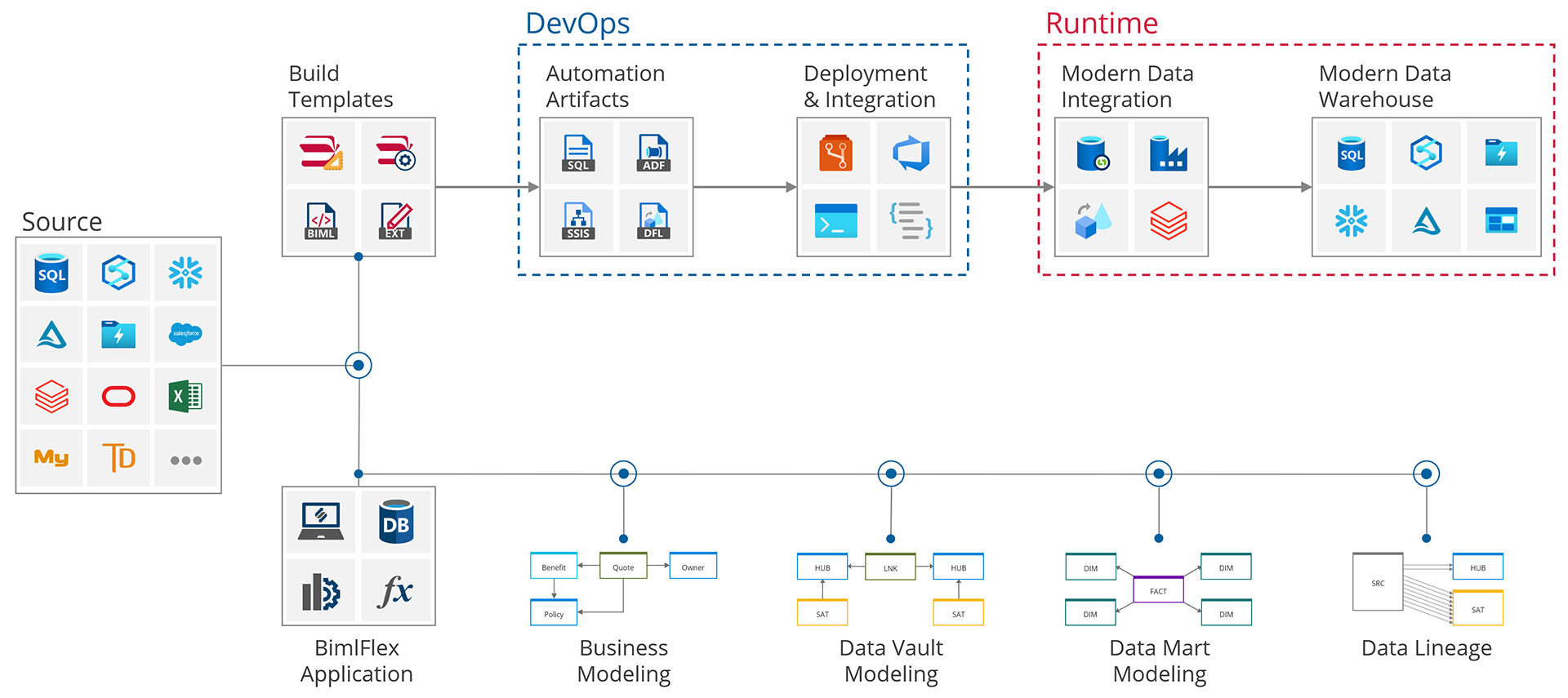
Simplifying Data Mesh Creation
BimlFlex offers a straightforward method for creating a data mesh solution. Businesses can implement data governance and structure their data efficiently by connecting source data and opting for data domain modelling. The user-friendly interface ensures even non-technical users can navigate the system with ease.
Tailored Solutions
Different teams have distinct needs. BimlFlex’s adaptability ensures each team can meet their specific challenges, whether implementing a comprehensive data architecture or a more minimalistic approach. It supports many data storage options, ensuring businesses aren’t boxed into a one-size-fits-all solution.
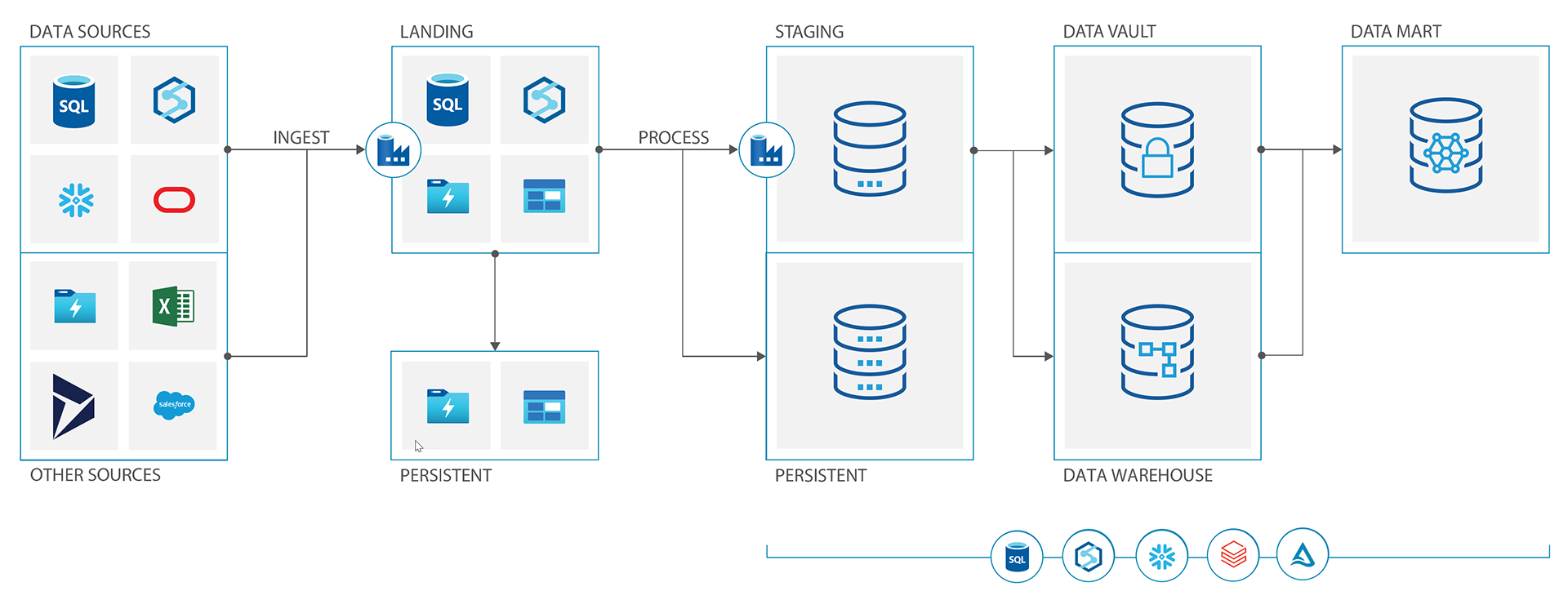
Organized Data Solutions
BimlFlex facilitates the construction of data solutions by categorizing them by data domain. This categorization allows for logical or physical separation or even consolidation, depending on the business's specific needs.
In Conclusion
BimlFlex is not just another automation platform. It's a versatile and efficient solution for businesses that demand flexibility in their data solutions. By offering modularity akin to building with Lego blocks, BimlFlex ensures that businesses can tailor their data solutions precisely to their needs, ensuring efficiency and adaptability in an ever-evolving digital landscape.
For those looking for an innovative data solution, BimlFlex may just be the answer. Contact us to take the next step. Request Demo or simply email sales@varigence.com
